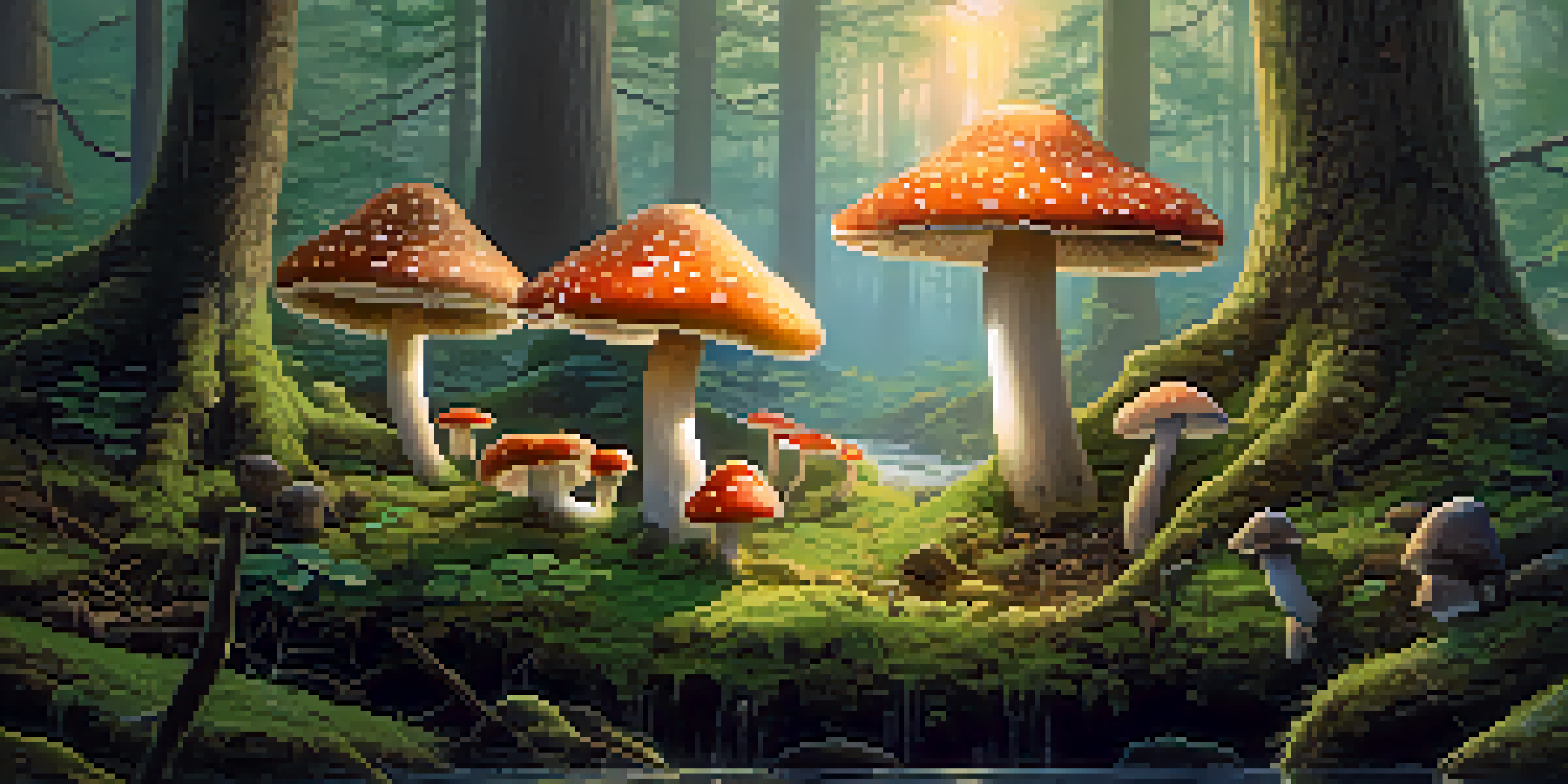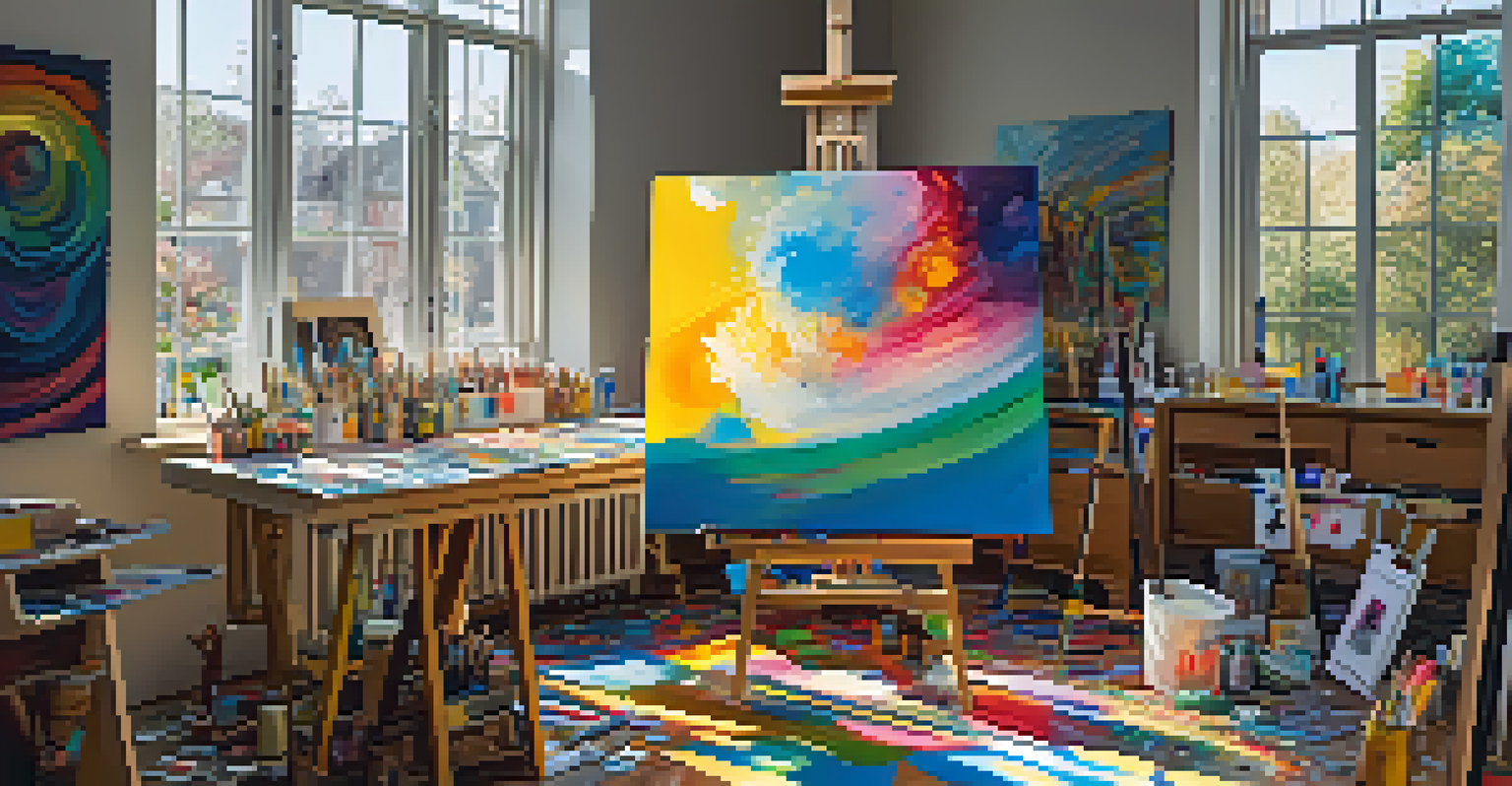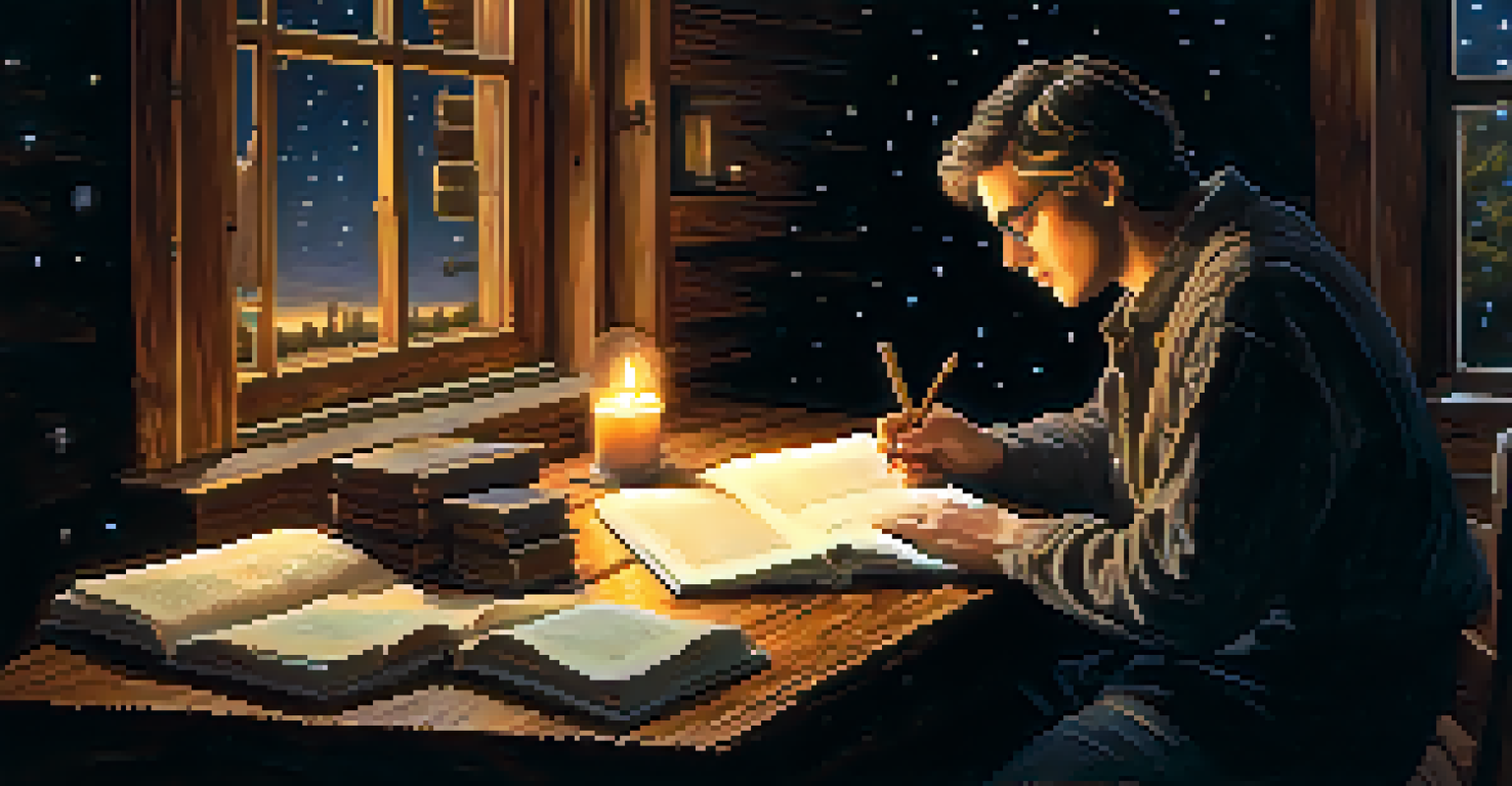Entheogens: A Catalyst for Imagination in Storytelling

Understanding Entheogens: More Than Just Substances
Entheogens are naturally occurring substances that can alter consciousness, often used in spiritual or shamanic contexts. They include plants and fungi like psilocybin mushrooms and ayahuasca, known for inducing profound experiences. These substances have been utilized for centuries by various cultures, often seen as a bridge to deeper understanding or creative insights.
The greatest artists are not those who create the best work, but those who inspire others to create.
In storytelling, entheogens can serve as catalysts, allowing writers and creators to tap into deeper layers of imagination. The altered states they induce can lead to unique narratives, characters, and worlds that might not surface in a sober mindset. This aspect makes them an intriguing tool for those looking to push the boundaries of their creativity.
However, it’s essential to approach the use of entheogens with respect and caution. They are not a magic bullet for creativity but rather a means to explore the vast landscape of human consciousness. When used thoughtfully, they can inspire stories that resonate on multiple levels.
The Historical Role of Entheogens in Storytelling
Throughout history, various cultures have incorporated entheogens into their storytelling traditions. Indigenous tribes, for instance, often use these substances in rituals that inspire myths and legends, shaping their worldviews and narratives. These stories frequently reflect the deep connection between humans and the natural world, revealing truths that resonate through generations.

The use of entheogens in storytelling can be seen not only in oral traditions but also in written works. Authors like Aldous Huxley and Carlos Castaneda have drawn from their experiences with these substances, creating narratives that challenge perceptions of reality. Their works often blur the lines between fiction and spiritual experience, inviting readers to explore the unknown.
Entheogens Enhance Creativity
These substances can unlock unique perspectives, inspiring innovative storytelling and artistic expression.
The influence of entheogens extends beyond traditional storytelling into modern literature and film. Many contemporary creators are exploring themes of altered states, consciousness, and transformation, drawing inspiration from these ancient practices. This blending of old and new enriches the storytelling landscape, creating a tapestry of human experience.
Creativity and Altered States: A Unique Connection
The relationship between creativity and altered states of consciousness is a fascinating area of study. Research has shown that substances like psilocybin can enhance divergent thinking, a key component of creativity. This ability to think outside the box can lead to innovative ideas and imaginative storytelling that captivates audiences.
Creativity is intelligence having fun.
Many artists and writers have reported that their most profound insights often come during altered states. Whether through meditation, breathwork, or entheogenic experiences, these moments can unlock new perspectives and ideas. For example, the surreal imagery in Salvador Dalí’s paintings can be linked to his explorations of consciousness, showcasing how altered states can inspire unique artistic expressions.
However, it’s important to note that creativity can also thrive without entheogens. Practices like mindfulness and deep reflection can lead to powerful insights as well. The key lies in finding what works best for each individual and exploring the depths of imagination through various means.
Contemplating the Ethics of Using Entheogens
As we delve into the use of entheogens for storytelling, it’s crucial to consider the ethical implications. Many of these substances are sacred to indigenous cultures, and their commercialization can lead to cultural appropriation. Respecting the origins and practices surrounding these substances is vital for maintaining their integrity.
Moreover, the potential risks associated with entheogen use cannot be overlooked. Not everyone reacts positively to these substances, and they can lead to challenging psychological experiences. Creators must weigh the potential benefits against the risks, ensuring that their exploration is safe and responsible.
Respect Cultural Significance
It's essential to honor the sacred traditions surrounding entheogens to avoid cultural appropriation and misuse.
Incorporating entheogens into storytelling should involve a mindful approach that honors their history and significance. By doing so, writers and artists can create narratives that not only entertain but also educate and inspire. This balance fosters a deeper appreciation for the interconnectedness of creativity and consciousness.
Modern Applications: Entheogens in Contemporary Storytelling
Today, many filmmakers, writers, and artists are experimenting with entheogens as a part of their creative process. With the resurgence of interest in psychedelics, there’s a growing conversation about their potential to enhance artistic expression. Documentaries, films, and novels are increasingly exploring these themes, inviting audiences to consider the role of consciousness in storytelling.
In the realm of cinema, movies like 'Enter the Void' and 'Doctor Strange' depict altered states that resonate with the experiences reported by entheogen users. These films challenge viewers to explore the boundaries of reality and imagination, offering an immersive storytelling experience. This trend reflects a broader cultural shift towards openness about the exploration of consciousness.
Similarly, literature is witnessing a renaissance of psychedelic themes, with authors weaving entheogenic experiences into their narratives. This not only adds depth to storytelling but also sparks discussions about personal and collective experiences. As more creators embrace these elements, storytelling becomes a platform for exploring the complexities of human consciousness.
Personal Narratives: The Impact of Entheogens
Many artists share personal stories of how entheogens have transformed their creative processes. These narratives often highlight profound moments of insight or inspiration that emerged during their experiences. For example, a writer might describe how a journey with ayahuasca led them to discover a hidden aspect of their protagonist, enriching their narrative.
Such personal accounts not only inspire others to explore their creativity but also foster a sense of community among those who have shared similar experiences. These stories create a tapestry of human connection, illustrating how entheogens can serve as a bridge between individuals and their creative expressions. They remind us that storytelling is deeply rooted in personal experience.
Growing Acceptance in Art
As society embraces the therapeutic benefits of entheogens, they are increasingly influencing contemporary storytelling.
Additionally, the sharing of these narratives can help destigmatize the use of entheogens in creative fields. As more artists speak openly about their journeys, it encourages a broader acceptance of diverse methods of inspiration. This shift has the potential to reshape the narrative around creativity, emphasizing the importance of exploration and personal growth.
The Future of Entheogens in Storytelling
As society continues to evolve, so too does the conversation around entheogens and their role in creativity. With increasing research into their therapeutic benefits, more people are recognizing the potential for these substances to enhance artistic expression. This growing acceptance may pave the way for a new era of storytelling that embraces altered states as a source of inspiration.
Furthermore, as discussions about mental health and well-being gain momentum, entheogens are being reevaluated as tools for personal development. This shift could lead to more creators exploring these substances in their work, potentially resulting in narratives that reflect the complexities of modern life. Stories that resonate with audiences on a deeper level can emerge from this exploration.

Ultimately, the future of entheogens in storytelling holds exciting possibilities. As more individuals share their experiences and insights, the creative landscape will continue to expand. This evolution invites storytellers to embrace the unknown, weaving rich tapestries of imagination and consciousness that inspire future generations.